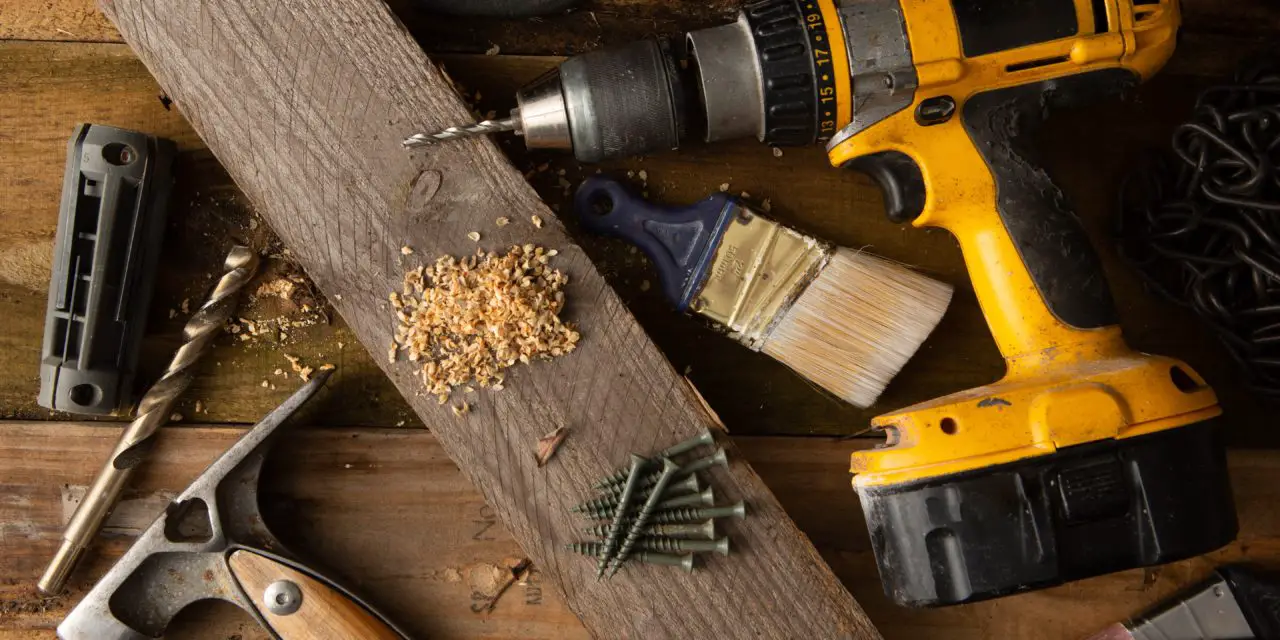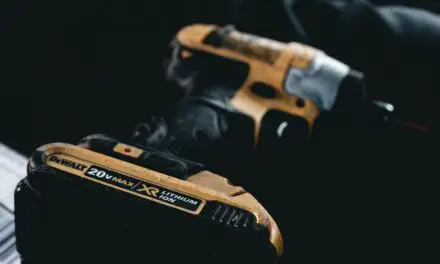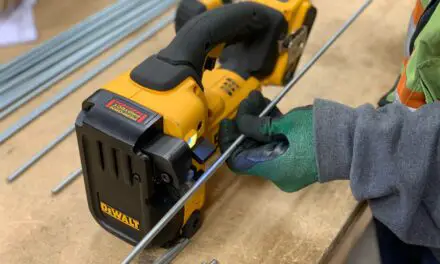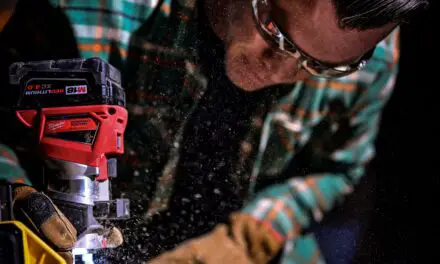Anything can happen when working on DIY projects. Rain or shine, you need to be able to get the job done. The question is, are DeWalt drills waterproof, and what happens if they get wet?
DeWalt drills are not made to be waterproof and should not be used wet. You should always disconnect from a power source and dry completely before using it.
Below we will be looking at the difference between waterproof and water-resistant and the steps to complete if your tool gets wet or soaked.
DeWalt Drills: Waterproof or Water-Resistant
First, let’s look at the difference between waterproof and water-resistant. This is a difference that can confuse a lot of people.
| Waterproof | Water-Resistant |
| Totally sealed and protected from water Water cannot enter or affect item | Repels water Allows moisture to be blocked Will let in water if soaked Will let in water after a long period of exposure |
Waterproof items are completely sealed and protected from water. This makes it safe for it to be dunked or dropped into water.
For example, some watches are waterproof up to a certain number of feet. There is usually something on the outside of the item that lets the water from entering or affecting the item.
Water-resistant, on the other hand, repels water. Repelling of water doesn’t stop it from coming in completely. This allows moisture or accidental spills to happen without damaging items.
Are DeWalt Drills Waterproof or Water-Resistant?
Now that we know the difference, are DeWalt drills waterproof or water-resistant?
DeWalt drills are water-resistant, not waterproof. They have sealing on them to stop everyday wear and tear; this includes things like getting minorly wet.
Yet, they should not be soaked or used in wet environments. According to the DeWalt Support page, this can cause sparking, electrocution, or personal injury.
We have also investigated whether DeWalt drills can sustain low temperatures.
What happens, though, if your drill does get wet? Let’s look at how we can help our drill dry out after getting wet.
Drying out Your DeWalt Drills after getting Wet
Let’s say it happened: you dropped your drill in water or otherwise got it wet. How do you prevent a long list of nasty side effects from getting your electronics wet?
Looking at a few steps, we can see how to dry out your drill for future use.
- Remove Power Source
- Dry off any moisture on the outside
- Let the Drill dry off completely
- Check for water damage
Read on for more details about each step.
Removing your Power Source
This is something that can be done with any non-waterproof objects. If they get wet and are electronic, you will want to remove that power source as soon as possible.
You don’t want to turn on the drill or test it accidentally. Damage can be done to the drill or even you if you test out or accidentally turn on that drill.
Removing the battery also allows the battery to dry out as well as the contact points.
Removing Outside Moisture
Once you have removed the power sources from your DeWalt drills, you want to go ahead and dry them off.
Grab a towel or anything to wick the moisture off, and give it a good rub. That means taking out the drill bit and drying that off as well. Anything that is normally removable take it off.
Don’t open up your drill because you don’t want any remaining moisture or wetness on the outside to get onto your interior electronics or motherboard.
Some say you should be able to use a hair dryer or other heat source to eliminate some of the water inside the tool, but you don’t have to do this.
Leave your Drill to Dry
The most effective part of this process is to leave your drill in a nice dry place for a while.
If it’s a nice sunny day, keeping it out in the sunshine can help, or leave it somewhere dry.
You want your drill to dry off completely before you attempt to turn it back on.
Residual moisture can screw with your drill if not left to dry.
Yes, this may be a pain if you are in the middle of a project, but better safe than sorry. If you have another drill, try using that one while your water-soaked one dries.
Check for Water Damage
You don’t necessarily want to open up your power drill, but if you notice that after its dry, it still isn’t turning on, you might have water damage.
Water damage can happen to your drill directly, or you could have a water-damaged battery.
Check to see if your battery can hold a charge. If it can, and your drill is still dying quickly or won’t turn on, you might have an issue with your drill itself.
The best thing to do is check to ensure water damage is covered under your warranty.
DeWalt Drills are Not Waterproof
Overall, DeWalt drills are not waterproof. They may be water-resistant because of sealings around important parts, but that’s it.
DeWalt does not recommend that their drills be used in any wet setting. They don’t even recommend trying to waterproof your drill yourself.
So you aren’t able to build that water palace under the lake with your drill. At least your drill will be useful for other projects, and you will be safe and keep your drill lasting a long time.





